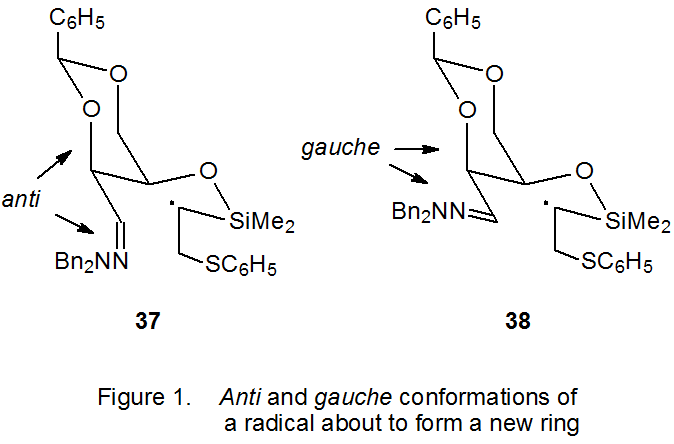III. Hidrazonas e Iminas
- Page ID
- 80349
Las reacciones radicales de las hidrazonas carbohidratadas 2 ,43—46 son menos comunes que las de los éteres de oxima; las reacciones de las iminas 43 son aún más raras. Las reacciones reportadas de hidrazonas, como la que se muestra en la ecuación 12, 43, implican ciclación radical. Los sustratos en la mayoría de estas reacciones son ésteres derivados del ácido (2,2-difenilhidrazono) acético (eq 13). 44,45
.png)
.png)
La reacción mostrada en la ecuación 14 representa una ciclación altamente estereoselectiva que involucra una hidrazona carbohidrato. 46 La estereoselectividad en esta reacción está determinada por la conformación preferida (37, Figura 1) del intermedio producido por un radical feniltiilo que se agrega al doble enlace carbono-carbono en el sustrato. La conformación 37 tiene el enlace carbono-nitrógeno anti al enlace carbono-oxígeno adyacente. La conformación 38, que se espera sea más estable por tener más sustituyentes pseudoecuatoriales, se desestabiliza por interacciones dipolo-dipolo derivadas de una relación gauche entre los enlaces C=N y C-O vecinos. 46
.png)


